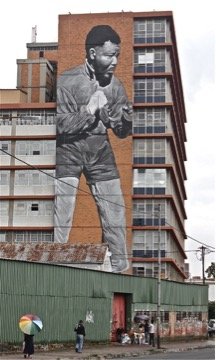“Our march to freedom is irreversible. We must not allow fear to stand in our way.” — Nelson Mandella
February 11, 2015 marked the 25th anniversary of Nelson Mandela’s release from South Africa’s Victor Verster prison. In 1964, he and seven other members of the African National Congress received life sentences for conspiring to overthrow the apartheid government, a system of strict racial segregation and white domination.

Mandela was sent to Robben Island prison, seven miles off the coast of Cape Town, where he spent the next 18 years. In 1982, South Africa’s president offered to free him if he would renounce violence, but Mandela refused, insisting that the government must first end apartheid. In 1988, Mandela was moved to the Victor Verster Prison Farm, about 50 miles from Cape Town, where he stayed until his release.
Nelson Mandela went on to lead South Africa as its first democratically elected president from 1994 to 1999. Apartheid ended in 1994.
This year also marks the 35th anniversary of Carnegie Corporation of New York’s first grant to the United States–South Africa Leadership Exchange Program for a conference called “Where Is South Africa Headed?” The intention was to bring together South Africans and Americans discuss ways to peacefully change conditions in South Africa as well as to build support for more activist American policies toward the country. The Corporation began providing grants to anti-apartheid activist groups based in the United States during the 1980s and early 1990s.
Another example of Corporation work in South Africa was the 1984 photo exhibit “South Africa: The Cordoned Heart,” which was created to give viewers insight into what it meant to be poor in South Africa, and to raise awareness of the extreme poverty that existed there alongside great wealth.



